Owning a home is a big part of the American dream. And it can be very expensive, and for many, it’s their single biggest investment. One way to make it easier is by using a mortgage. According to The Pew Charitable Trusts, 42% of U.S. homeowners have mortgages.
This long-term loan can be tough on your finances. It can pose a heavy burden due to its recurring payments. This is especially true with today’s volatile economic climate, where mortgage rates constantly fluctuate. Fortunately, there are options to combat this problem, including mortgage refinancing.
What Is Refinancing Mortgage?
Refinancing a mortgage means replacing an existing mortgage with a new one having different payment terms. Simply put, it is a financial makeover for a mortgage. The new loan goes into paying off the original one. The borrower will now be obligated to repay the new loan.
The new loan will have a new interest rate, either fixed or variable, as well as a new repayment term. The specific terms of the refinance mortgage will be contingent on your negotiations with the lender. Some determining factors are your credit score, current financial standing, and the equity you have built in your home.
Why Might You Want to Refinance Your House?
You can choose to refinance a mortgage for various reasons, including the following:
Lower Interest Rate
The most common reason for refinancing is to take advantage of a lower interest rate. Lower rates translate to smaller monthly payments over the lifetime of the loan. This can make it easier to keep up with your mortgage repayment obligations and other bills.
Shorten Loan Term
Another reason to consider home refinancing is to shorten the loan term. For instance, if you’ve got a 30-year mortgage, you can refinance it to a 15-year one. While your monthly payments will increase in value, you’ll pay off your mortgage sooner. This can save you a considerable chunk of change in interest over the long haul.
Cash Out
A cash-out means replacing the current mortgage with a bigger one and taking the difference in cash. You can put the money towards home improvements. This project can boost the value of your home and increase your equity. You can also use the cash to consolidate high-interest debt or for other significant expenses.
Secure More Favorable Loan Terms
Home loan refinancing can also serve as an opportunity to secure more favorable loan terms. This can include transitioning from an adjustable-rate mortgage to a fixed-rate one. This move can protect you against interest rate spikes, ensuring monthly payment stability.
In addition to the interest rate, a refinance mortgage may have other more attractive features compared to the original mortgage. These include zero prepayment penalties or more flexibility in accommodating extra repayments. This allows you to pay off the loan faster.
Tap Into Home Equity
You can also use refinancing to tap into home equity. This refers to the difference between the amount you owe on your mortgage and the current market value of your home. Home loan refinancing allows you to access this equity to get a second loan.
The new loan can go a long way in advancing your investment interests. It can finance a new property purchase, renovate your current home, or even for debt consolidation, among other uses.
However, it’s essential to tread with caution as you’re using your home as collateral. Therefore, consider your repayment capabilities and future financial stability before making this decision.
Lower or Eliminate Premium Mortgage Insurance (PMI)
It can also help you lower or get rid of premium mortgage insurance. PMI is a form of insurance that a lender takes out if the borrower has less than 20% equity in the home. Elimination of PMI is only possible if your home’s value has increased, reducing your loan-to-value ratio (LTV) to 80% or less.
What Are the Different Types of Refinances?
If you plan to refinance a house, you have several options to consider. Each option has its pros and cons and works best for certain financial situations. The following are the most common types of mortgage refinances:
Rate and Term Refinance
This is the most common type of home refinance. Its main driver is a drop in market interest rates. Also known as a no cash-out or traditional refinance, this option lowers your interest rate. It can also change the loan’s terms or both. The goal is to decrease your monthly payments without a cash advance.
Like a typical mortgage, a rate and term refinance has eligibility requirements. You will need a score of at least 620 to refinance a conventional mortgage. For an FHA loan, you will need to have a minimum credit score of 500.
You will also need sufficient equity in your home. A 20% equity is adequate for a rate and term refinance with good terms. A 50% debt-to-income ratio is preferred, but lenders may be willing to consider higher DTIs depending on your overall credit profile.
Cash-Out Refinance
The cash-out refinance option allows you to access the equity in your home by borrowing more than what you owe on the original loan balance. As a result, this home refinance leaves you with cash in hand or a check from your lender.
Other benefits include the ability to remove certain borrowers from the loan obligation and the possibility of better loan terms.
Cash-out refinances are most beneficial when the market interest rate is lower than what you have on your current loan balance.
You will need to meet certain requirements to qualify for a cash-out refinance. Credit score and debt-to-income ratio guidelines are similar to rate and term refinance.
Lenders may also require an appraisal to determine the home’s value. Remember that lenders will only draw out up to 80% of the home’s value. However, this rule does not apply to refinancing VA loans.
Refinance to a Shorter Term
Consider a shorter-term refinance if you want to pay off your mortgage fast. It usually leads to substantial savings by decreasing the overall interest payable. However, it comes with the trade-off of higher monthly payments.
Refinance to a Fixed-rate Mortgage
Adjustable-rate mortgages can be unpredictable over time. Refinancing to a fixed-rate mortgage offers the stability of constant monthly payments. On the flip side, interest rates may end up being higher than when you initially took out the loan.
Short Home Refinance
If you’re behind on mortgage payments and face losing your home, a short home refinance may help. Your lender gives you a new, smaller loan that’s easier to pay. That way, you will be able to keep your home, and the lender loses less money than they would have lost in the event of a foreclosure.
However, getting the lender’s approval may prove challenging. It can also hurt your credit score.
How Refinancing Works
Home refinancing is usually easier than obtaining a mortgage for buying a home. However, it has similar steps. The duration can vary between 30 to 45 days. Below is a rundown of the steps you need to take when refinancing a mortgage:
Get Pre-Approved
The first step in home loan refinancing will involve a lender verifying your eligibility and the amount of loan you can borrow. The lender will look at your credit history and current financial standing. Bank statements and pay stubs will help in this.
Tax returns will also be a part of the assessment. Your equity and proof of insurance coverage for your property will also be part of the equation.
Shop Around for the Best Rates and Terms
Once you’ve been pre-approved, it’s time to shop around for the best deal. Compare different lenders and check their terms and current rates. Other things to consider are the fees involved, such as closing costs. These fees vary from lender to lender.
Submit a Loan Application
Once you’ve found a lender that offers the best deal, it’s time to apply for your loan. You will need to fill in an application and provide all the required documents, such as bank statements, pay stubs, tax documents, a credit report, and proof of assets.
Property Appraisal
Next, the lender will order an appraisal. This expert estimate of your home’s value helps the lender decide if it is good collateral for your requested home refinance. An appraisal covers the physical condition of the home as well as its size and location, among other things.
Loan Decision
Following the appraisal and approval of your loan application, the lender will decide whether or not to offer you the loan.
Closing
If the lender approves the loan, the process will advance to its final stage — closing on the refinance. Closing on refinance is usually faster than in-home purchase.
The stage involves signing the loan documents. It’s worth mentioning that closing costs are usually included in the loan. However, there are home refinance options where the borrower pays these costs separately. In the second scenario, the borrower pays for the closing costs during the closing stage.
The Costs Involved in Refinancing
Refinancing your mortgage comes with its share of expenses. Closing costs are a critical component of these expenses. They usually amount to 2 to 3% of the loan’s total. The figure fluctuates based on two factors:
Each lender will have their specific set of fees, which make up the closing costs. They may include appraisal fees, application processing fees, title searches, and credit checks.
The home refinance you choose also impacts closing costs. For instance, rate and term refinance comes with lower closing costs than cash-out refinance.
It’s crucial to consider these costs before deciding to refinance a home. This is because these extra expenses can defeat the initial purpose of the mortgage refinance.
The Benefits of Home Refinancing
Refinancing your mortgage offers a range of benefits. These advantages include the following:
Saves Money
One of the primary benefits is the lower monthly mortgage payments. You can reduce the amount you pay towards your loan each month by extending the loan term and securing a lower interest rate. You can use this extra cash to manage other expenses, ultimately improving your financial health.
Shorter Loan Term
Home refinancing can accelerate your journey to outright home ownership. If you maintain the same monthly payment with a lower interest rate, more money will go toward the principal instead of interest. This means you can repay your loan faster, freeing you from your mortgage obligations sooner than expected.
In addition, the refinance to a shorter-term option helps reduce the loan term without prepayment penalties.
Cash-Out Refinance
A cash-out refinance can give you more financial freedom. By leveraging the equity you’ve built in your home, you can fund expenses that require a substantial upfront payment. These include college education for your kids or a new car.
The Risks of Refinancing
Despite its numerous advantages, refinancing comes with potential pitfalls. It’s crucial to be aware of these risks to make an informed decision.
Closing Costs
Closing costs associated with a mortgage refinance can be expensive. These additional expenses may offset the financial benefits of refinancing by adding to your total loan amount.
Effects of Fluctuating Interest Rates
The fluctuating nature of interest rates also poses a risk. This is especially concerning if you opt for an adjustable-rate mortgage. If interest rates rise after refinancing, you may end up paying more for your mortgage. On the other hand, if you choose a fixed-rate mortgage and the interest rates go down, you could miss out on a chance to save more.
Delays Homeownership
A refinance home loan essentially resets your mortgage clock. By doing so, it extends the time before you own your home. For example, if you’re halfway through a 30-year mortgage and refinance into another 30-year one, you’ll end up with a total of 45 years of payments.
Higher Monthly Payments Can Overwhelm You
Higher monthly payments can be a challenge. This is because shortening your loan term during home loan refinancing usually increases monthly payments. For that reason, it’s imperative to ensure you can comfortably handle these increments before proceeding with a home refinance.
When to Refinance a Home
Home refinancing can be a strategic financial move if used effectively. However, it will need to make sense to be a viable option. This will boil down to several factors.
A good rule of thumb is to consider refinancing when it could save you money on your monthly payments or allow you to settle your loan faster. However, it’s also crucial to factor in external elements. The following are some scenarios where home refinancing could be a sound decision:
When Interest Rates Are Low
If you’re seeking to lower your monthly payment, home refinancing makes sense when interest rates are low. This might free up some cash for other expenses or saving goals.
When You Are in a Strong Financial Position
If you’re financially stable and have room in your budget for higher monthly payments, shortening your loan term through home loan refinancing might be worth considering. While it might increase your monthly payment, the overall interest you pay over the life of the loan will be less.
When You’ve Built Substantial Equity in Your Home
Another scenario where home refinancing will work is if you’ve accumulated substantial equity in your home. A cash-out home refinance allows you to tap into this equity. You replace your existing mortgage with a new one for more than you owe and take the difference in cash. This could be useful if you need funds for a large expense.
If Your Current Mortgage Plan Has Prepayment Penalties
Home loan refinancing might be a viable alternative if you can pay more in monthly payments, but your current mortgage has prepayment penalties. This will enable you to pay off the mortgage more quickly without getting penalized, saving money in interest
When Closing Costs Are Reasonable
You should also think about the costs, including closing costs. These costs can be quite high, and it may take some time for you to recoup them in the form of lower monthly payments or other benefits. Refinancing makes sense financially if the closing costs are reasonable.
While still at closing costs, another thing to consider is the number of years you will occupy the home. Generally, if you plan on staying in the house for a long time, the costs may be worth it.
Final Thoughts
Refinancing your mortgage can be a strategic financial move under the right circumstances. It can save you a lot of money over the life of your loan, lower your monthly payment, or grant you access to funds you can use for another large purchase.
However, it is not a decision you should make lightly. It’s essential to weigh the benefits and drawbacks carefully. Also, consider your current financial situation and the impact of your decision on your financial goals, both short-term and long-term. In addition, consider all external factors, such as interest rates, and consult a financial advisor.












